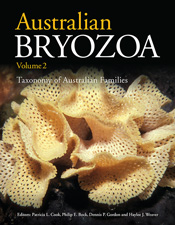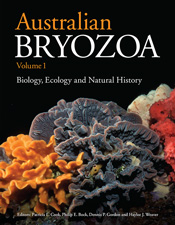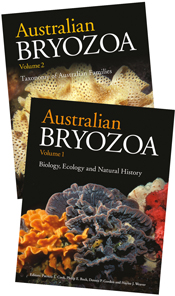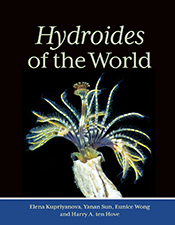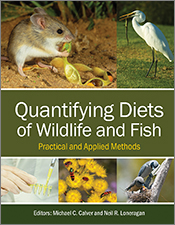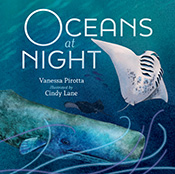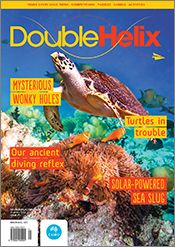Australian Bryozoa Volume 2

Taxonomy of Australian Families
Edited by: Patricia L Cook, Philip E Bock, Dennis P Gordon, Haylee J WeaverThe second of two volumes describing Australia's 1200 known species of bryozoans.
Bryozoans are aquatic animals that form colonies of connected individuals. They take a variety of forms: some are bushy and moss-like, some are flat and encrusting and others resemble lace. Bryozoans are mostly marine, with species found in all oceans from sublittoral to abyssal depths, but freshwater species also exist. Some bryozoans are of concern as marine-fouling organisms and invasive species, while others show promise as sources of anticancer, antiviral and antifouling substances. + Full description
Written by experts in the field, Australian Bryozoa Volume 2: Taxonomy of Australian Families is the second of two volumes describing Australia’s 1200 known species of bryozoans, the richest diversity of bryozoans of any country in the world. It contains detailed taxonomic data and illustrated family-level treatments, which can be used to identify specimens. It provides an authoritative reference for biology students, academics and others interested in marine biology.
Joint Recipient, 2019 Whitley Awards Certificate of Commendation: Biological Resource
- Short descriptionNews
Co-published with the Australian Biological Resources Study (ABRS).
Reviews
"Australian Bryozoa Volume 2: Taxonomy of Australian Families includes chapters written by six of the most important bryozoan taxonomists. The result could not be different: well written, concise and up-to-date. At the same time, the text is full of details regarding bryozoan taxonomy, just as a taxonomic treatise should be... a further milestone in the taxonomic knowledge of the phylum."
Leandro M. Vieira, Systematic Biology 68(1), 2019
Details
Hardback | July 2018 | $240.00ISBN: 9781486306824 | 320 pages | 270 x 210 mm
Publisher: CSIRO Publishing
Illustrations, Photographs
ePDF | July 2018
ISBN: 9781486306831
Publisher: CSIRO Publishing
Available from eRetailers
Features
- The second of two volumes (published concurrently) describing Australia’s 1200 known species of bryozoans.
- Contains detailed taxonomic data and illustrated family-level treatments, which can be used to identify specimens.
- Illustrated throughout with scanning electron microscope (SEM) images showing intricate details of bryozoan biology and morphology.
Contents
List of authors1: Class Stenolaemata, Order Cyclostomata
Philip E. Bock, Paul D. Taylor, Peter J. Hayward and Dennis P. Gordon
2: Class Gymnolaemata, Order Ctenostomata
Patricia L. Cook, Philip E. Bock and Dennis P. Gordon
3: Class Gymnolaemata, Order Cheilostomata
Patricia L. Cook, Philip E. Bock, Peter J. Hayward and Dennis P. Gordon
4: Class Phylactolaemata
Timothy S. Wood
Index
View the full table of contents (PDF, 51kb)
Authors
Patricia Cook was born in England, and worked at the London Natural History Museum until retiring in 1986. After retirement she came to Australia to continue her work on bryozoan systematics. She has written or co-authored about 100 papers. She was instrumental in establishing the International Bryozoology Association, of which she was secretary for many years. Pat died aged 88 in late 2015.
Philip Bock has been a geologist, lecturing at RMIT until retiring in 1997. His enthusiasm for bryozoans arose after mapping the geology of south-western Victoria. He is an Honorary Associate at Museums Victoria, and created the “Bryozoan Home Page” website in 1994. He also is an editor for the World Register of Marine Species.
Dennis Gordon is an Emeritus Researcher at the National Institute of Water & Atmospheric Research (NIWA) in Wellington, New Zealand. He is a global authority on the biology and systematics of bryozoa but has an interest in all life, and served on the international project team of the Catalogue of Life.
Haylee Weaver is the fauna taxonomist at the Australian Biological Resources Study (ABRS). She is a parasitologist who has written extensively on the ecology of parasites of Australian rodents. Haylee edits fauna books for ABRS and has developed an interest in bryozoan taxonomy.
Australian Biological Resources Study (ABRS)
In 1973 the Commonwealth Government established the ABRS to document what plants and animals there are in Australia and where they occur. The ABRS is now part of the Department of Environment and Energy. It brings together the expertise of scientists from around Australia and overseas, to prepare and publish authoritative information about Australia’s flora and fauna.

